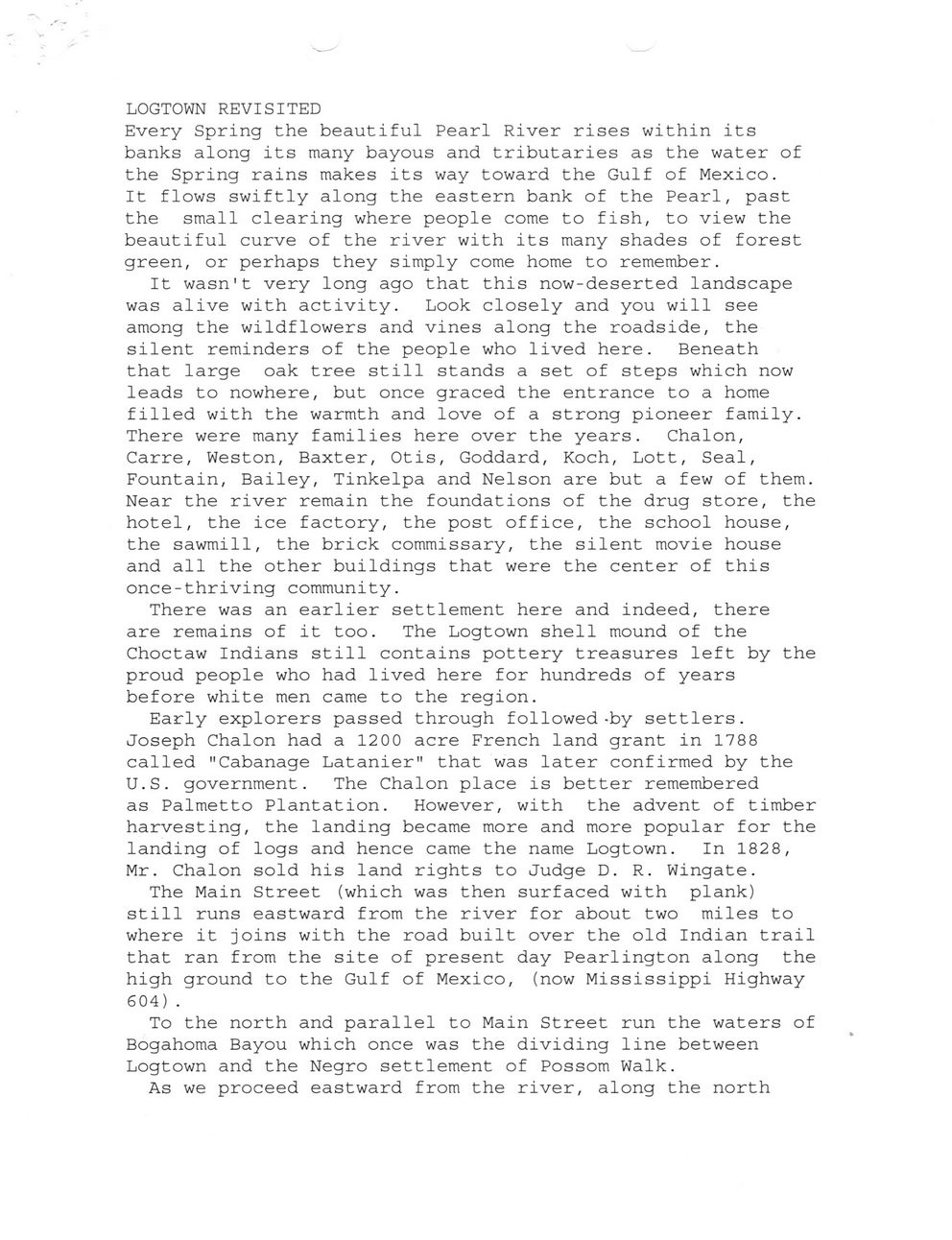This text was obtained via automated optical character recognition.
It has not been edited and may therefore contain several errors.
LOGTOWN REVISITED Every Spring the beautiful Pearl River rises within its banks along its many bayous and tributaries as the water of the Spring rains makes its way toward the Gulf of Mexico. It flows swiftly along the eastern bank of the Pearl, past the small clearing where people come to fish, to view the beautiful curve of the river with its many shades of forest green, or perhaps they simply come home to remember. It wasn't very long ago that this now-deserted landscape was alive with activity. Look closely and you will see among the wildflowers and vines along the roadside, the silent reminders of the people who lived here. Beneath that large oak tree still stands a set of steps which now leads to nowhere, but once graced the entrance to a home filled with the warmth and love of a strong pioneer family. There were many families here over the years. Chalon, Carre, Weston, Baxter, Otis, Goddard, Koch, Lott, Seal, Fountain, Bailey, Tinkelpa and Nelson are but a few of them. Near the river remain the foundations of the drug store, the hotel, the ice factory, the post office, the school house, the sawmill, the brick commissary, the silent movie house and all the other buildings that were the center of this once-thriving community. There was an earlier settlement here and indeed, there are remains of it too. The Logtown shell mound of the Choctaw Indians still contains pottery treasures left by the proud people who had lived here for hundreds of years before white men came to the region. Early explorers passed through followed-by settlers. Joseph Chalon had a 1200 acre French land grant in 1788 called "Cabanage Latanier" that was later confirmed by the U.S. government. The Chalon place is better remembered as Palmetto Plantation. However, with the advent of timber harvesting, the landing became more and more popular for the landing of logs and hence came the name Logtown. In 1828, Mr. Chalon sold his land rights to Judge D. R. Wingate. The Main Street (which was then surfaced with plank) still runs eastward from the river for about two miles to where it joins with the road built over the old Indian trail that ran from the site of present day Pearlington along the high ground to the Gulf of Mexico, (now Mississippi Highway 604) . To the north and parallel to Main Street run the waters of Bogahoma Bayou which once was the dividing line between Logtown and the Negro settlement of Possom Walk. As we proceed eastward from the river, along the north

Logtown Logtown Revisited (01)